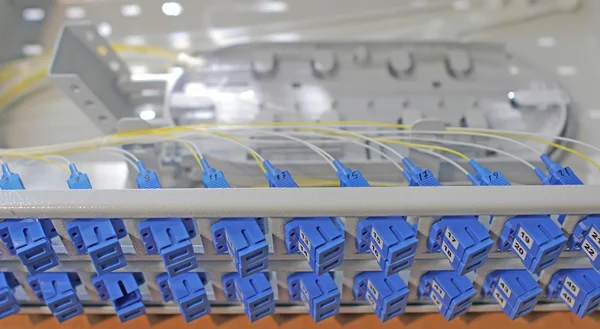How Fiber Patch Panels Improve Network Performance and Reliability?

Fiber patch panels are often overlooked in the discussion of improving network performance and reliability, yet they play an important role in ensuring the integrity of the network. Patch panels are used to connect multiple network cables between network devices such as switches, routers, servers, and storage devices. This connection is commonly referred to as patching. You can check out this website to explore the variety of fiber patch panels that allow for the patching of fiber optic cables, which provides a higher level of transmission performance and data security compared to traditional copper wiring.
In this article, we will explore how fiber patch panels can improve network performance and reliability.
What are Fiber Patch Panels?
Fiber patch panels are a type of hardware that is used to connect fiber optic cables to each other and to other network devices. The panels are typically wall-mounted and contain several ports that are used to connect the cables. The patch panel provides a physical connection between the fiber optic cables and the network devices. The panels also provide a way to organize and manage the cables, making it easier to troubleshoot any issues that may arise.
Benefits of Fiber Patch Panels
Fiber patch panels provide numerous benefits, including improved network performance, reliability, and data security. The use of fiber patch panels can greatly improve the speed and reliability of the network by providing a faster transmission speed than traditional copper wiring. The panels also provide increased data security by preventing unauthorized access to the network. Additionally, the patch panels provide a way to organize and manage the cables, making it easier to troubleshoot any issues that may arise.
Improved Network Performance
Fiber patch panels can improve network performance by providing a faster transmission speed than traditional copper wiring. Fiber optic cables are capable of transmitting data at much higher speeds than copper cables, which means that the network can handle more traffic and operate more efficiently. Additionally, fiber patch panels are more reliable than copper cables, as they are less prone to interference and data corruption.
Increased Data Security
Fiber patch panels can also provide increased data security by preventing unauthorized access to the network. The patch panels provide a physical connection between the fiber optic cables and the network devices, which means that any unauthorized access attempts can be easily identified and blocked. Additionally, the panels provide a way to organize and manage the cables, making it easier to monitor the network for any suspicious activity.
Cost Savings
The use of fiber patch panels can also lead to cost savings. The panels are generally more cost effective than traditional copper wiring, as they require less maintenance and are more reliable. Additionally, the panels are more efficient, which means that the network can handle more traffic, leading to fewer outages and less downtime.
Easy Installation and Maintenance
Fiber patch panels are also easy to install and maintain. The panels are typically wall-mounted and require minimal wiring, making them easy to install and manage. Additionally, the patch panels are designed to be easily accessible, making it easy to troubleshoot any issues that may arise. Overall, fiber patch panels offer an easy and efficient way to install and maintain fiber optic cabling systems.
Conclusion
Fiber patch panels are an essential component of any network setup. The panels provide numerous benefits, including improved network performance, increased data security, cost savings, and easy installation and maintenance. By using fiber patch panels, you can ensure that your network is running at its peak performance and is secure from unauthorized access.
